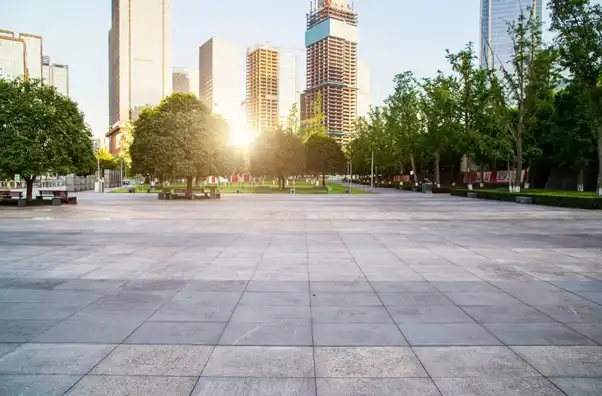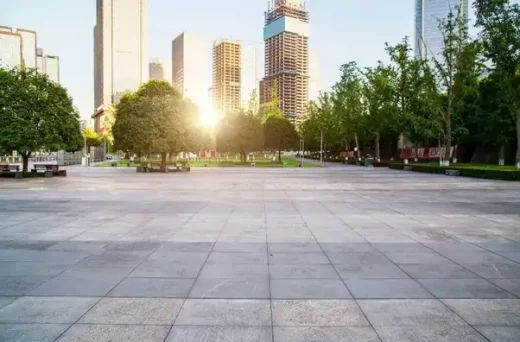Innovative landscape materials design, Metal fabrication construction, Building laser cutting system technology
Innovative Landscape Materials Redefining Urban Architectures
10 October 2024
Building materials are changing rapidly, and it’s transforming our cities. From sleek new technologies to sustainable upgrades, these innovations impact how we live, work, and play. They offer better comfort, improved sustainability, and even reduce maintenance costs over time.
As urban areas expand, expect to see more groundbreaking materials that redefine our environment. It’s an exciting time for architects, developers, and communities – let’s find out more about the materials reshaping our cities below.
Advanced Concrete Types
Concrete is everywhere you look, from high-rises to sidewalks. It’s a staple in building designs whether you’re talking about homes or offices. However, not all types of concrete are created equal. Lately, advanced concrete types are changing the game. Here’s a quick roundup of the latest innovations.
- Photocatalytic Concrete: Cleans the air by breaking down pollutants.
- Self-Healing Concrete: Uses bacteria to repair cracks.
- Ultra-High Performance Concrete (UHPC): Offers extreme strength with a sleek feel.
- Translucent Concrete: Lets light pass through, merging design with utility.
- Bendable Concrete: Absorbs impacts and resists cracking.
The materials are becoming readily available in the market, and can be used in both residential and commercial properties. Providers of building and decor materials, like rockproductsinc.com, can help you find the best solution for your needs.
Biophilic Building Materials
Imagine adding nature to cities – biophilic materials aim to do just that by using natural elements in buildings. They help us feel connected to the outdoors, making our urban spaces more welcoming.
Plus, these materials play a significant role in sustainability, as they reduce energy needs and improve air quality, thanks to plants and natural textures. Picture a wall of greenery or floors made of organic material – it’s all about blending the lines between nature and urban environments. As cities grow, these materials can help in making urban life both sustainable and enjoyable.
Recycled Plastic Composites
Think about turning waste into something useful. That’s what recycled plastic composites do. In contemporary home building, these materials can be used for a variety of purposes, including decking and outdoor furniture. They’re strong and don’t rot, plus you’re reusing plastic that would otherwise waste away in landfills.
This keeps our environment cleaner and adds durability to everyday items. With more architects and builders turning to these materials, they’re becoming a chic, green choice for modern homes.
Green Insulation Solutions
Insulating a home is essential, for both comfort and energy efficiency, but there are ways to do it in a greener, more eco-friendly way. Imagine using materials like wool or cellulose instead of traditional insulation. Wool is naturally fire-resistant and offers excellent thermal and sound insulation.
On the other hand, cellulose, made from recycled paper, traps air and keeps heat where it belongs – in or out, depending on the season! These options not only save energy but also reduce your carbon footprint.
Smart Glass Technology
Imagine windows that do more than just let light in. Smart glass technology is like having shades built right into your windows! Thanks to this technology, you can adjust your windows from clear to tinted based on sunlight, helping keep buildings cool in the summer or warm in the winter without electricity.
This tech is a big step for buildings looking to save money on energy bills. Simply put, smart glass technology makes sure you get natural light and temperature control without needing extra gadgets.
Permeable Paving Systems
Permeable paving systems do more than just prevent puddles after heavy rains. They can help control flooding and improve the safety of urban drivers and pedestrians. These materials let water seep through, cutting down on runoff and reducing flooding.
More than just practical, they’re a green choice as they recharge groundwater and reduce the burden on drains! Whether for parking lots or walkways, they’re becoming popular in cities looking to manage water responsibly.
Photovoltaic Pavement
Imagine walking on a surface that generates clean power. That’s the essence of photovoltaic pavement. Integrated with solar cells, these surfaces turn sunshine into electricity. Thanks to this revolutionary innovation, streets, walkways, or even parking spaces can become power sources.
This technology not only paves the way for green energy, but it also aids in cutting down on the city’s carbon footprint. Plus, this technology is likely to play a role in the development of smart cities, which are designed to provide residents with ideal living conditions by merging sustainability with digital innovations.
Living Roofs
Living roofs, or green roofs, optimize the use of roof areas in urban centers. They’re packed with plants and soil, which can also act as natural insulators. They’re ideal for cooling spaces and cutting heating costs.
Besides energy savings, they offer habitat for local wildlife and help filter the air above busy streets. These green spaces can be community gardens, providing fresh produce and a slice of nature in urban sprawls. Homes and businesses that carry living roofs are investing not just in energy efficiency, but in encouraging biodiversity in urban areas.
Bamboo Reinforcement
Bamboo surprises many as a strong alternative to regular materials like steel. Fast-growing and renewable, bamboo holds a lot of promise in reshaping the architecture and construction of city environments.
This material is lightweight but provides impressive strength, making it ideal for areas prone to earthquakes. Ultimately, when assessing different types of building materials, don’t overlook bamboo due its great potential in both sustainability and performance.
Keeping an Eye on New Entries and Innovations
New materials and innovations in building aren’t just trends – they’re setting the stage for the future. Keeping up with these developments ensures cities remain cutting-edge and efficient. For developers, architects, and city planners, staying informed is key. Keep an eye on the latest entries, as they may open doors to a more sustainable and smarter way of living.
Comments on this guide to Innovative landscape materials design article are welcome.
Building
Architecture Design Articles
Modular Construction
Modular Building & Off-site Construction
Modular buildings advantages: off-site construction
Off-site construction benefits
Comments / photos for the Innovative Landscape Materials Redefining Urban Architectures page welcome






